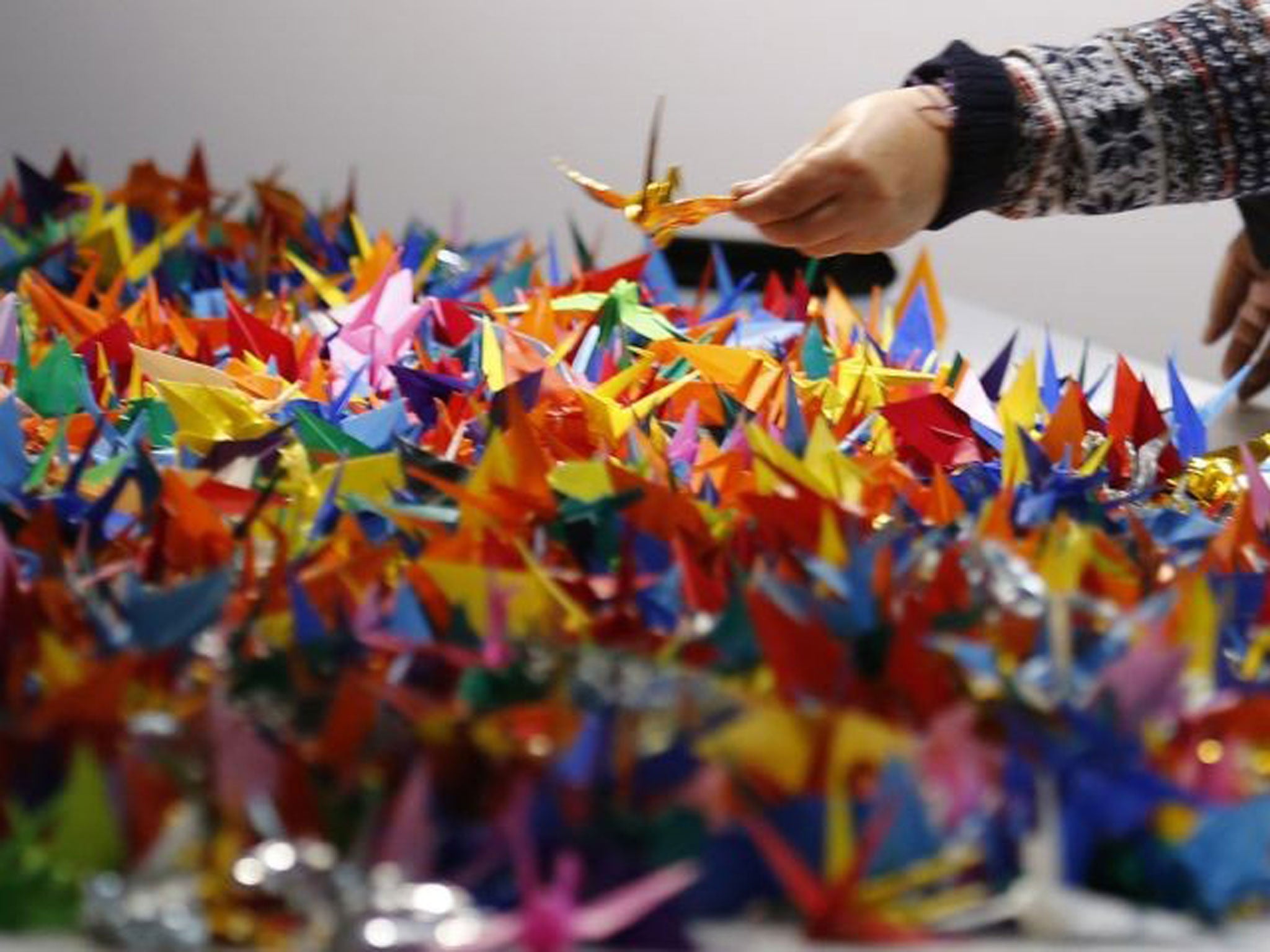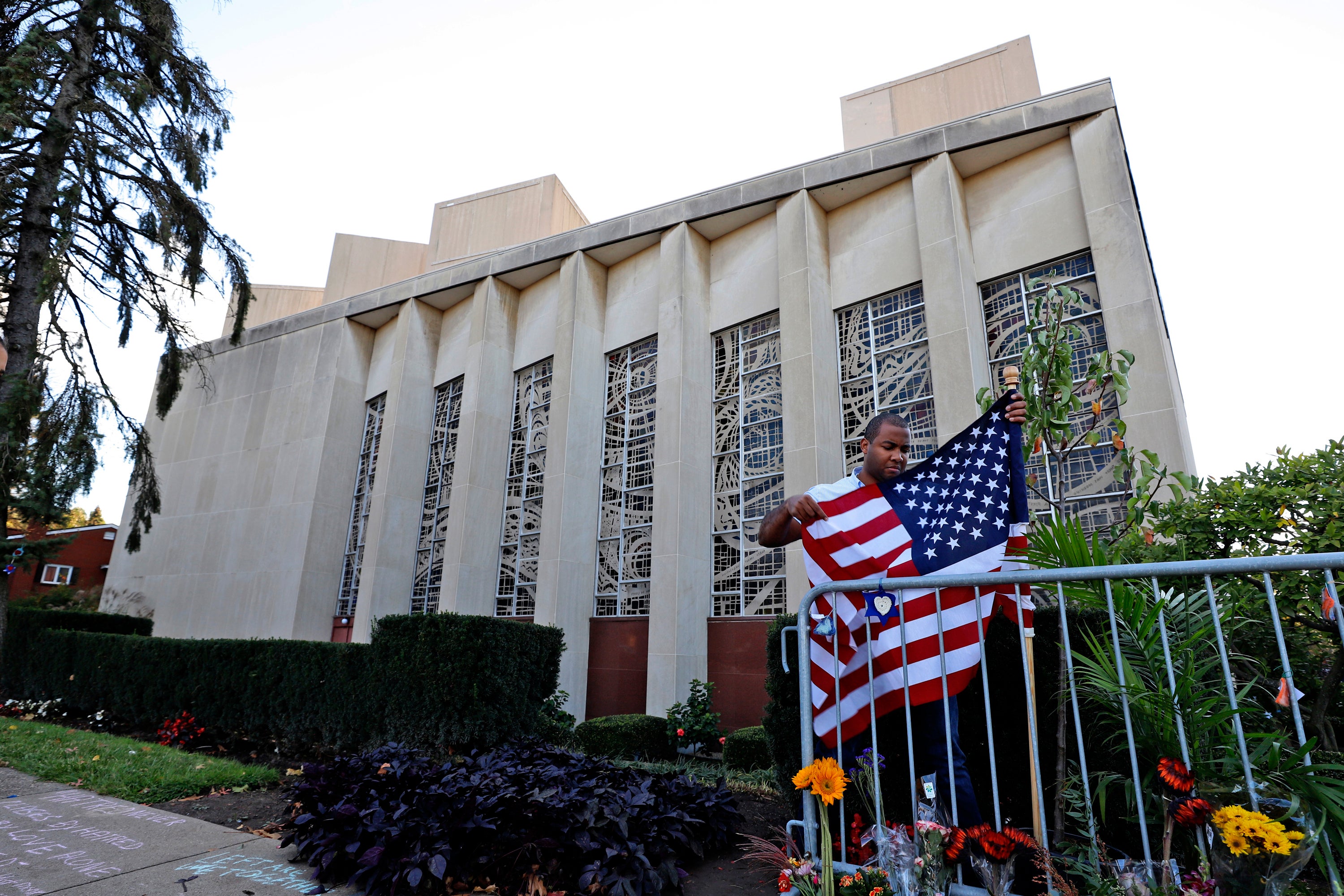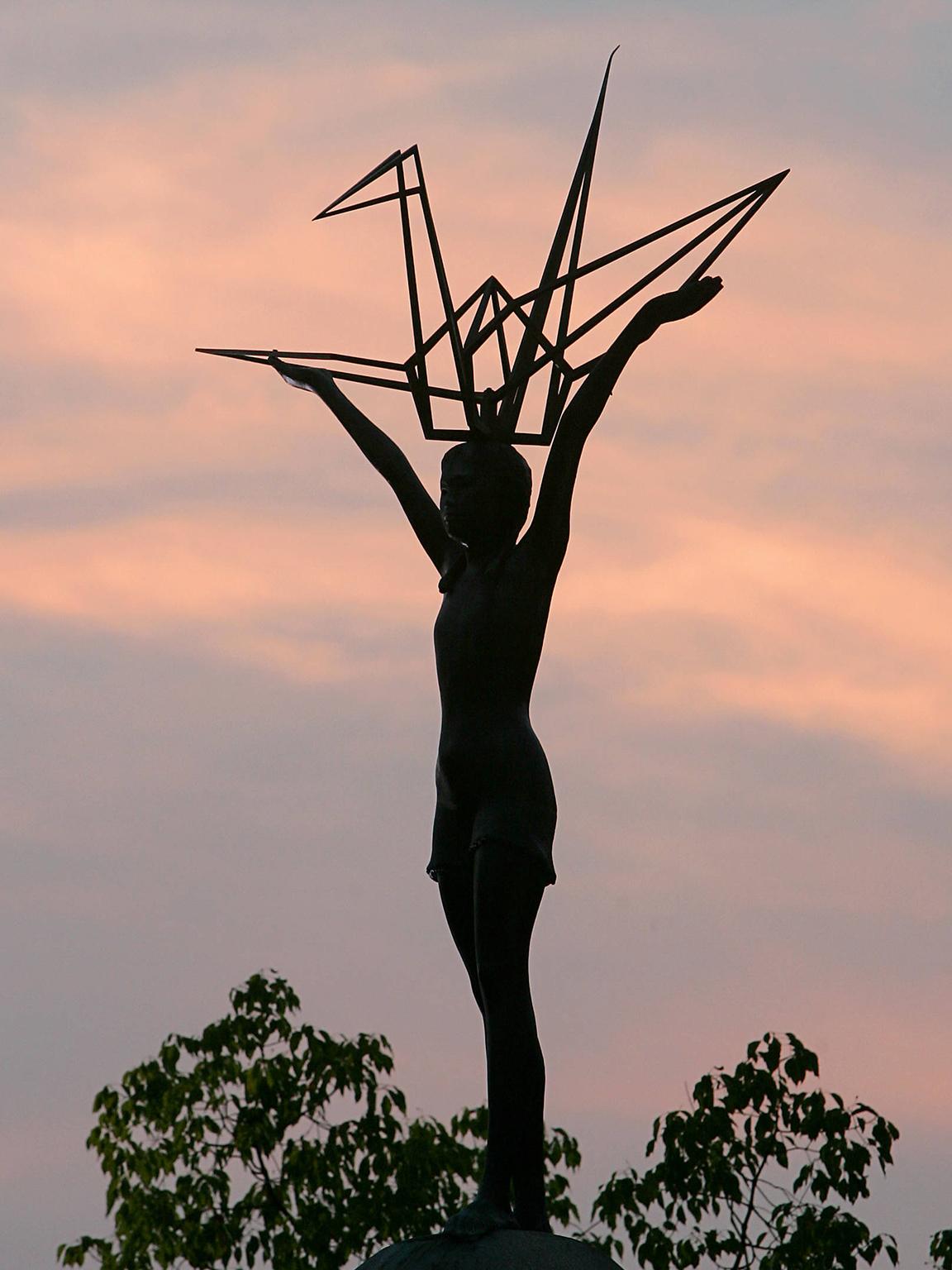At the Tree of Life synagogue today, as we mourn our loved ones, we are still surrounded by paper cranes
Three years after the attack that left our friends and relatives dead, we remember them while cataloguing the gifts we received from across America

The cranes arrived at Tree of Life synagogue in a large box, nested in tissue. They were not live, but made of paper, their shape produced via a complicated series of folds. These origami birds — or orizuru — were tied together in 10 long rows of 100 each; 1,000 in total. When lifted, the birds cascaded and swooped from their strings, like an avian daisy-chain or a rainbow waterfall.
The gift, known as a senbazuru, was donated by a variety of Asian-American organizations in the wake of the October 27, 2018 mass shooting at the synagogue. More such senbazuru wreathes arrived, including one that had been forwarded as a symbol of support from one site of suffering to another: first to Charleston (where a white supremacist killed nine Black Americans in 2015), then to Charlottesville (where a white supremacist killed an anti-fascist protester in 2017), then, again, to Pittsburgh. It was not just the aesthetic and symbolic beauty of the cranes that moved me, but the interfaith and intercultural aspect of the gesture.
On October 27, 2021, Jewish America will once again turn its eyes to my synagogue, Tree of Life, as well as Dor Hadash and New Light, the other affected congregations, in order to commemorate the lives of the eleven Jewish men and women who were murdered there. It has been a comfort to know that so many shared our pain and felt horrified by the hatred that motivated the shooting. Almost immediately after the FBI and police cordoned off the crime scene, people began to pilgrimage to the site to express their love and solidarity. They came day after day, week after week. Some brought nothing but themselves, stopping by for a moment to pay their respects. Many brought messages and gifts — so many, in fact, that mounds grew along the newly erected metal fence.

The hordes of visitors left an idiosyncratic and fascinating array of items. Laurie Eisenberg, a professor of history at Carnegie Mellon University, writes movingly about some of these objects and what inspired them in her essay, “Sharing Their Stories,” in the anthology Bound in the Bond of Life: Pittsburgh Writers Reflect on the Tree of Life Tragedy.
The artifacts ranged widely, from notes and cards to paintings, prayer shawls, decorated tiles, and teddy bears. There were football and soccer team jerseys; crocheted stars, mosaics, books, and jewelry. A pair of Converse sneakers, with Hebrew and Arabic messages of peace scrawled in Sharpie across the toes. Flowers, both live and glass. Rocks. Piles and piles of rocks. Some were painted with messages, but most remained unadorned, a nod to a tradition of Jewish mourning in which the bereaved place a stone on the grave of a loved one to mark their visit. And, of course, the orizuru. They appeared each day, multiplying. One, two, ten. A hundred. An innumerable and constant offering.
The gifts also poured in by mail, flocks of orizuru among them. The deliveries accumulated with the passing weeks, forming snowy drifts in the Rabbi’s makeshift office. Eventually, a small group of Tree of Life members founded the Gifted Items Committee, which I was invited to join. The group meets for a couple of hours every other week, guided by Barb Feige, Executive Director of Tree of Life, and Eric Lidji, Director of the Rauh Jewish Archives at the Heinz History Center, to review and catalogue. Eventually, the congregations will need to make decisions on what should be distributed, displayed, or archived.
It is perhaps unknown to others just how little those of us at Tree of Life understood of the reaction happening beyond Squirrel Hill after the shooting. We were preoccupied by shock and grief, not to mention the business of identifying and burying the dead. It was much later, when we began to sort through all that we’d been sent, from people of such varied religions and backgrounds, from so many states, nationalities, and countries, that the scope of the response stunned us. Almost three years later, we are still cataloguing. And, we are still counting orizuru.
The crane is a holy and mystical creature among many Asian cultures. It represents peace, health, and longevity. In the months following the shooting, the grounds crew periodically collected the plethora of artifacts for preservation, but they did not touch the cranes. Orizuru, we had learned, are supposed to be ephemeral. It is believed that as they dissolve and disintegrate, the prayer is released and the wish manifested.
The cranes were initially pristine: stiff and proud, with vertical tails, long necks, and pointy beaks. They were bright and obstreperous, saturated in color — crimson, emerald, cerulean — and patterned and flowered and striped. When the wind kicked up, they tumbled down the sidewalk, like fallen autumn leaves.
We watched as the orizuru developed like film, through a chemistry of weather and time. Softened by rain. Desiccated by drought. Exsanguinated by sun. Flattened and agglutinated by feet. Fragile, impermanent husks; like us, I thought, and human life.
According to Japanese legend, the crane lives for 1,000 years. The person who folds 1,000 cranes is granted a wish. A senbazuru requires a great deal of effort. It is a time-consuming and tedious undertaking. By making and sending one to us, the Asian American community was demonstrating their commitment and offering us a powerful gift: their one wish, or hope, for healing.
The gesture of the senbazuru grew popular from the extraordinary story of a Japanese girl named Sadako Sasaki. She was two years old when the atomic bomb dropped on Hiroshima; the exposure to radiation she experienced led to leukemia. Sasaki was admitted to a hospital, where she began to fold. She said, “I shall write peace upon your wings, and you shall fly around the world so that children will no longer have to die this way.” When she died at the age of twelve, she had folded only 644 cranes. Her friends folded the rest. They led a campaign to erect a statue in her honor. The monument is located in a park in Hiroshima with an inscription at the base of the pedestal that reads: “This is our cry. This is our prayer. For building peace in this world.”

Earlier this year, as our committee read and cried over a particularly poignant group of letters, Lidji offered his perspective on the purpose of our work. He cited a passage from Perkei Avot, which reads,“With ten utterances the world was created. And what does this teach, for surely it could have been created with one utterance?” As we all know, Lidji told us, it is far easier to destroy than to build. “My philosophy,” he explained, “is that these sorts of slow and deliberate projects, where you have to commit to an undertaking for a really long time, mirrors and ‘maintains’ the goodness inherent in the slow creation of the world.”
These words reverberate, especially as the congregation continues to pray in borrowed places. This past June, Tree of Life announced that architect Daniel Libeskind, who famously designed the master plan for the new World Trade Center, would design the new Tree of Life. However, the road is likely to be slow, pitted with questions about the future.
Meanwhile, the gifted committee meetings serve as a metaphorical rebuilding. Like the senbazuru, the amount of effort matters. As the committee gratefully combs through each letter and item, one by one, week after week, year through year, a counter-balance grows. The scales recalibrate: a wealth of love of love pushing back against one act of hate. Every letter or artifact is a brick in the architecture of healing.
Today, exactly three years after the attack, I think of Joyce’s welcoming spirit and the pride she would have felt at seeing her granddaughter Sophie read from the Torah at her Bat Mitzvah earlier this year. I think of Cecil and David’s kindness. I think of Rose’s boisterous and loving extended family. I think of Jerry, Bernice, Sylvan, Daniel, Richard, Melvin, and Irving.
I will also think about a day down the road, when we might stand in a renewed Tree of Life, rebuilt around a center dedicated to the fight against hate of any kind. I imagine the senbazuru as a lobby chandelier, bright with cranes in their eternal flight. Come in, they whisper. All are welcome. You are safe here.
This is our cry. This is our prayer.
The organizations who donated the senbazuru included the Japan-American Society of Pennsylvania, the Japanese Nationality Room Committee, the Japan Association of Greater Pittsburgh, the Asian Studies Center at University of Pittsburgh, Pitt’s Japanese Student Association, Japanese class at Carnegie Library of Pittsburgh, the Japanese Community Outreach at Shadyside Family Health Center, the West Virginia Japanese Community, Mitsubishi Electric Power Products, Inc., Chaya Japanese Cuisine, and other anonymous folders.
Bookmark popover
Removed from bookmarks